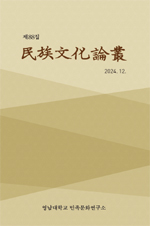- 영문명
- From Inheritance to Application: The Evolution of Chinese Shuyuan and the Operation of University Shuyuan
- 발행기관
- 영남대학교 민족문화연구소
- 저자명
- 류준형(junhyoung Ryu)
- 간행물 정보
- 『민족문화논총』제90집, 45~88쪽, 전체 44쪽
- 주제분류
- 인문학 > 역사학
- 파일형태
- 발행일자
- 2025.08.30
8,080원
구매일시로부터 72시간 이내에 다운로드 가능합니다.
이 학술논문 정보는 (주)교보문고와 각 발행기관 사이에 저작물 이용 계약이 체결된 것으로, 교보문고를 통해 제공되고 있습니다.

국문 초록
서원은 중국 전통 교육제도의 핵심 기제로서 지식 축적, 인재 양성, 학술발전에 기여해왔다. 송대 이후 명청 시기에는 제도적 안정성을 확보하며 교육·정치·학문의 복합적 공간으로 기능했다. 그러나 청 말기에는 서양 문물의유입과 근대화 요구, 교육 개혁의 필요성 등이 복합적으로 작용하며, 서원은점차 개혁과 폐지의 대상으로 전락하였다. 광서 연간 변법운동 시기에는 서원을 근대 학당으로 전환하려는 시도가 본격화되었고, 1905년 과거제가 폐지되면서 서원은 교육 체제 내 제도적 기반을 상실하게 되었다.
하지만 제도적 폐지는 곧 서원의 문화적·교육적 가치를 무효화하지 않았다. 1920년대 이후 지식인들 사이에서는 서원의 自學 정신과 공동체적 교육방식에 대한 재조명이 이루어졌으며, 호적은 이를 ‘중국에 있어 하나의 큰 불행한 사건’이라 평했다. 이러한 인식은 湖南自修大學, 無錫國學專修學校, 新亞 書院 등의 실천적 시도로 이어졌고, 이는 전통 서원의 정신과 서양 교육 제도의 융합을 모색한 사례로 평가된다. 이러한 흐름은 결국 홍콩중문대학의 書院 制 도입으로 제도화되며 ‘대학 서원’이라는 현대적 교육 모델로 구체화되었다.
대학 서원은 전통 서원의 인격 교육, 자율 학습, 공동체 생활을 계승하면서도 현대 대학 교육의 학제적 전문성과 학습 지원 체계를 통합하였다. 이는 단순한 문화 유산의 복원이 아니라, 시대적 요구에 따라 재구성된 실질적 교육모델로서의 진화를 의미한다. 특히 복단대학 등 중국 주요 대학들이 서원제를도입함으로써 전통 교육자산의 현대적 계승이 정책적으로 제도화되는 성과를이루었다.
그러나 대학 서원의 지속 가능성을 위해서는 교육 효과에 대한 이론 정립, 교육제도와의 정합성 확보, 인문 중심 교육과 전문 지식 간 균형 등 다양한과제가 남아 있다. 한국 사회 역시 서원의 연속성과 변화에 주목할 필요가 있으며, 특히 전통 교육 정신의 현대적 전환이라는 측면에서 교육 체제 개편에참고할 수 있는 시사점을 제공한다. 중국 서원의 演變은 단절과 계승, 소멸과재구성의 과정을 통해 자율·인격·공공성이라는 핵심 가치를 현대 교육 속에서 재활성화하는 사례로 기능하고 있다.
영문 초록
For over 1,300 years, shuyuan(書院) served as vital institutions in China’s educational landscape, contributing to intellectual development, talent cultivation, and scholarly advancement. Gaining institutional maturity by the Song dynasty and evolving further in the Ming-Qing period, shuyuan became integrated spaces where education, politics, and scholarship intersected.
However, by the late Qing era, the influx of Western ideas, pressure for modernization, and educational reform efforts led to the shuyuan being redefined as outdated relics and ultimately abolished.
During the Guangxu reform era, shuyuan were actively converted into Western-style schools, and the 1905 abolition of the civil service exams marked the loss of their institutional standing. Nevertheless, this official elimination did not erase their cultural or educational significance. From the 1920s, scholars like Hu Shi(胡適) reappraised shuyuan for their emphasis on self-directed learning and intellectual autonomy, describing their disappearance as a national loss. This reevaluation inspired modern adaptations such as Hunan Self-Education University(湖南自修大學), Wuxi Guoxue School(無錫國學專 修學校), and Xinya College(新亞書院), which combined shuyuan values with modern structures like academic departments and tutorial systems.
These experiments paved the way for institutionalized models like the collegiate system at the Chinese University of Hong Kong. University shuyuan (大學書院) retained communal life, moral education, and self-learning while integrating disciplinary specialization and student support. Their adoption by top universities like Fudan signaled the policy-level recognition of traditional educational values adapted for modern contexts.
The rise of university shuyuan demonstrates that shuyuan are not simply historical artifacts, but dynamic educational frameworks that can respond to contemporary needs. Their focus on autonomy and integrated learning aligns closely with liberal education and holistic development. However, challenges remain: integrating shuyuan into formal curricula, balancing humanities with specialization, and ensuring philosophical coherence.
For Korea, which shares a shuyuan heritage, China’s experience offers meaningful insight. As higher education systems face transformation, the pedagogical values of shuyuan-self-cultivation, moral inquiry, and inter disciplinary thought-can serve as powerful models for renewing education in a rapidly changing world.
목차
Ⅰ. 머리말
Ⅱ. 중국 서원의 개혁과 폐지
Ⅲ. 서원의 계승적 변화와 轉進
Ⅳ. 대학 서원의 설치와 운영 양태
Ⅴ. 맺음말
참고문헌
키워드
해당간행물 수록 논문
- 세계유산 ‘한국의 서원’ 祭享儀禮 활용 사례와 향후 과제
- ‘계승에서 활용으로’: 중국 서원의 演變과 대학 서원의 운영
- 국가유산 활용 사업을 통한 서원의 현대적 교육 활용 사례 분석
- 서원문화자산의 활용과 과제 - 2025년 「향교·서원 국가유산 활용사업 90선」을 중심으로
- 서원의 진정성 있는 활용
- 경산 지역 서원 현황과 활용 방안 제언
- 글로컬 인문공간 한국의 서원 활용도 제고를 위한 제언
- 한국 서원 연구의 활성화 및 활용을 위한 제언
- 동아시아 서원사 연구의 새로운 지평 - “Academies in East Asia”에 대한 서평
- 지역과 연계한 서원 체험학습 교재 개발 - 대구지역 초등학생 현장 체험학습을 중심으로
- 传统书院的现代命运-陇南书院的现代发展路径与教育功能再造
- ĐƯA DI SẢN ĐẾN GẦN VỚI CÔNG CHÚNG-SỰ CHUYỂN ĐỔI PHƯƠNG THỨC BẢO TỒN DI SẢN TẠI VĂN MIẾU-QUỐC TỬ GIÁM VIỆT NAM
- 전후 영국 사회의 요구와 신흥 대학교(New University)의 대응 - 워릭대학교(University of Warwick) 사례를 중심으로
- 중국 조선족 농촌 마을에서 공동체 관행과 관계맺기 - 토지유전정책 이후 A 조선족 농촌마을의 관계 재편성을 중심으로
- 신라의 稅役 관련 용어 용례 검토
- 종교적 실천을 통한 정체성의 재구성: 귀환 이주 고려인의 사례를 중심으로
- 현실주의 관점에서 바라본 냉전기 해외원조: 마셜플랜과 대한 원조
- 채원 오횡묵(吳宖黙)의 지역정치와 선정비(善政碑) 연구 - 경상도 고을을 중심으로
- 고고자료 검토를 통한 고구려 평양 시기의 왕릉 비정
참고문헌
관련논문
최근 이용한 논문
교보eBook 첫 방문을 환영 합니다!

신규가입 혜택 지급이 완료 되었습니다.
바로 사용 가능한 교보e캐시 1,000원 (유효기간 7일)
지금 바로 교보eBook의 다양한 콘텐츠를 이용해 보세요!



